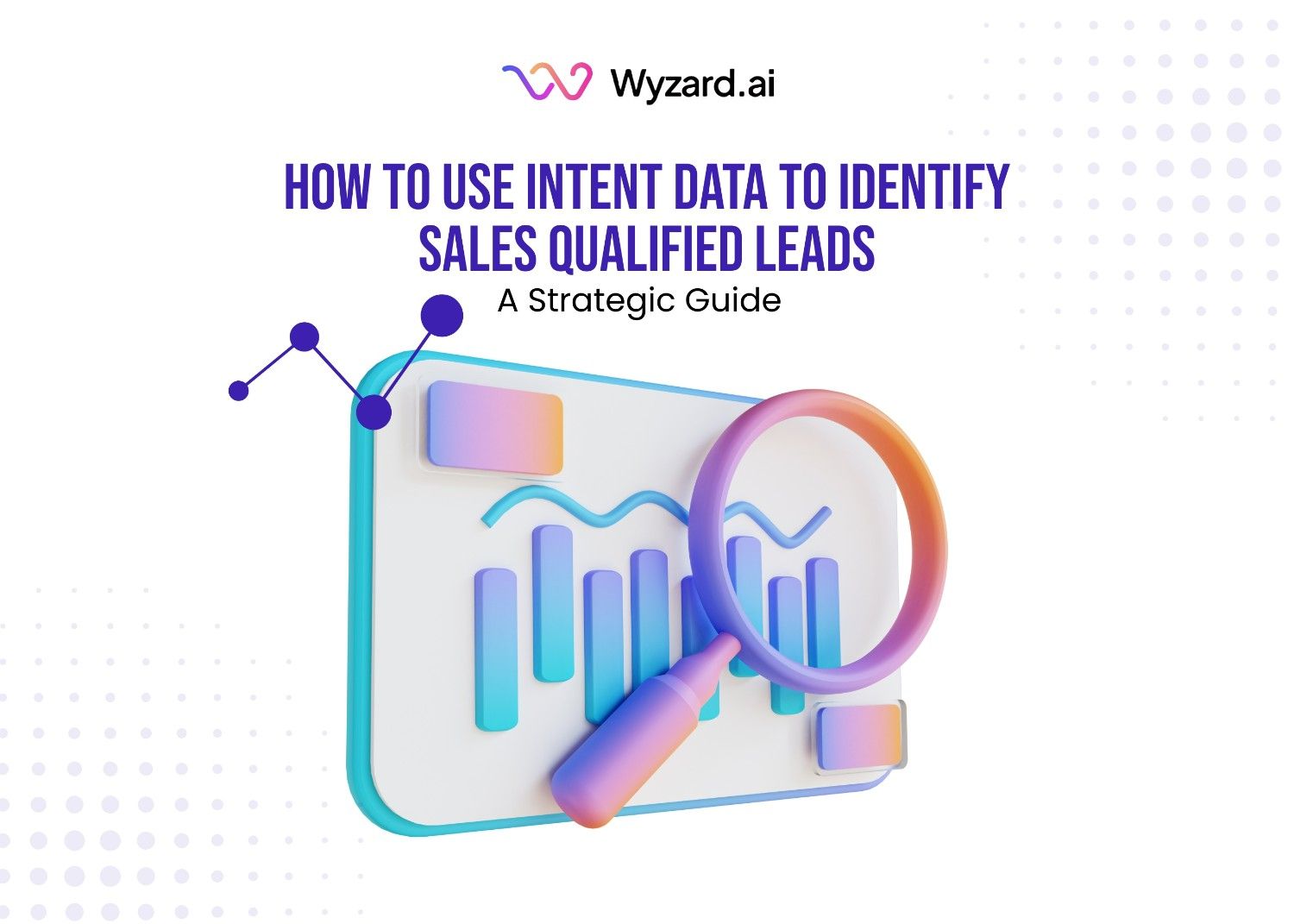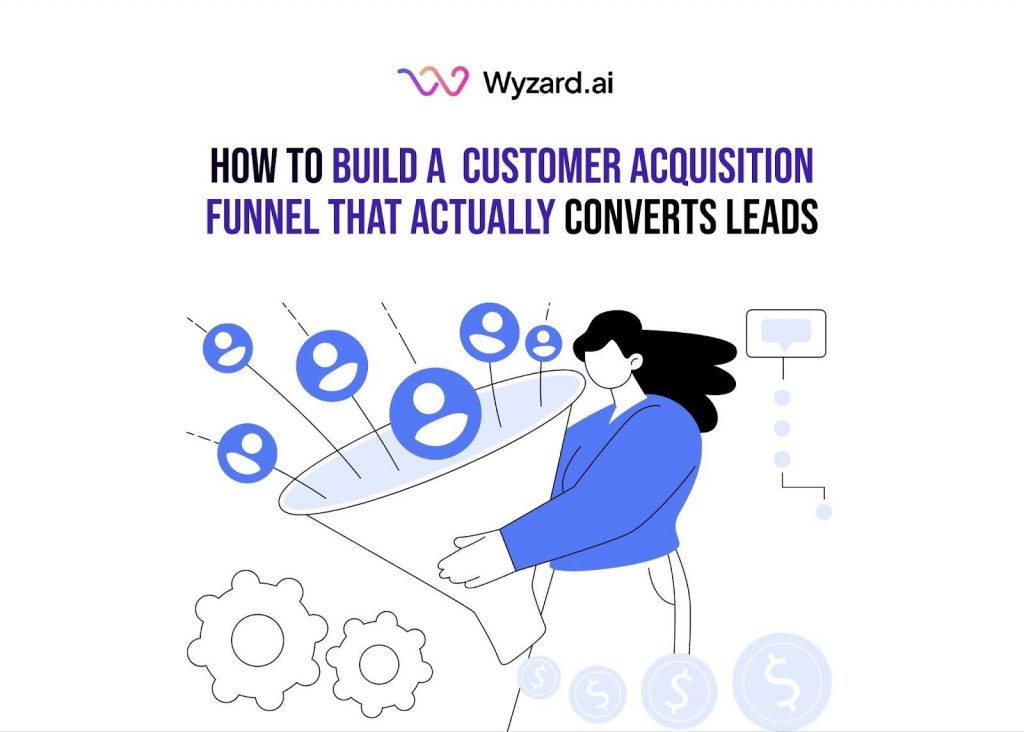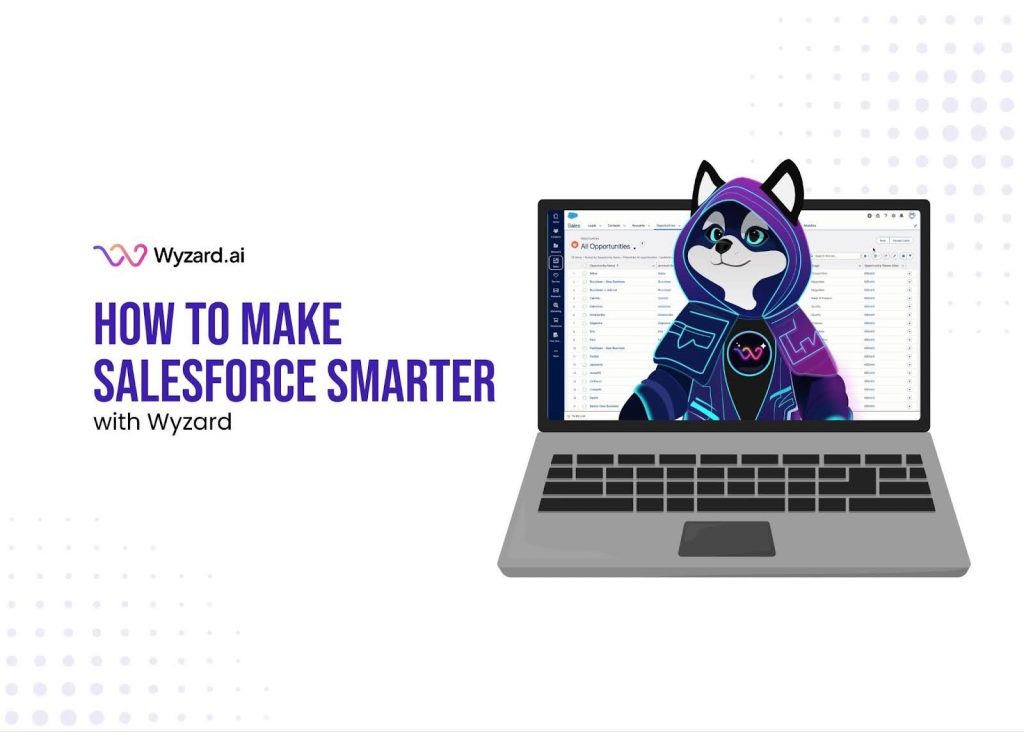You're generating traffic. Leads are visiting your website. But conversions? They're barely moving the needle. The problem isn't your ...
How To Use Intent Data To Identify Sales Qualified Leads: A Strategic Guide


Subscribe Now
Marketing teams generate traffic. Sales teams chase prospects. But somewhere between the two, high-intent leads slip through unnoticed.
The problem isn’t a lack of data; it’s the opposite. Teams are overwhelmed with website visits, email opens, and CRM entries, yet they struggle to identify who’s actually ready to buy. Scattered signals across platforms create blind spots, and by the time someone follows up, the moment has passed.
Intent data changes this. It reveals which prospects are actively researching solutions, comparing options, and signaling buying interest. But collecting intent data is only half the battle. Knowing how to use it strategically separates teams that convert from teams that guess.
This guide breaks down how to use intent data to identify sales-qualified leads, prioritize outreach, and act on buying signals before competitors do.
What Intent Data Reveals About Your Prospects
Intent data captures behavioral signals that indicate a prospect’s readiness to engage. Unlike basic metrics such as page views or email opens, intent data tracks meaningful actions that align with the buyer’s journey.
Two primary types of intent data exist, each serving a distinct purpose. First-party intent data comes directly from your digital properties, website visits, content downloads, and email responses. It offers precise insights into how prospects interact with your brand.
Third-party intent data captures broader activity across external platforms. This includes engagement with industry content, competitor research, and search behavior on publisher networks. Tools that aggregate this data help identify prospects actively evaluating solutions, even before they visit your site.
When combined, these data sources create a complete picture of prospect behavior. Teams can spot patterns that reveal urgency, identify decision-makers, and determine where prospects are in their evaluation process.
Collecting Buyer Signals That Matter
Not all intent signals carry equal weight. Teams need to focus on actions that truly indicate buying interest rather than passive browsing.
High-value intent signals include:
- Content engagement patterns: Prospects consuming specific resources, case studies, comparison guides, pricing pages, signal they’re evaluating solutions seriously
- Repeat visits to decision-stage content: Multiple interactions with high-value pages within a short timeframe suggest urgency
- Search behavior aligned with pain points: Keywords prospects use reveal the specific challenges they’re trying to solve
- Multi-stakeholder engagement: When several contacts from the same organization interact with your content, organizational interest is growing
For example, if three decision-makers from the same company download your ROI calculator within a week, that’s a stronger signal than one person browsing blog posts. The context of engagement matters as much as the action itself.
Platforms that unify these signals across channels help teams avoid missing critical buying moments. When someone visits your pricing page after attending a webinar, that sequence tells a story worth acting on.
Layering Firmographic Data for Precision
Buyer signals show interest, but firmographic data ensures that interest comes from prospects who actually fit your ideal customer profile.
Essential firmographic details to layer onto intent data:
| Firmographic Factor | Why It Matters | Actionable Insight |
| Industry | Different sectors face unique challenges | Customize messaging to address industry-specific pain points |
| Company size | SMBs and enterprises have different needs and budgets | Tailor solution positioning and pricing conversations |
| Revenue range | Align your offering with their purchasing capacity | Qualify prospects based on budget fit |
| Growth stage | Startups prioritize speed; mature companies value stability | Frame your value proposition accordingly |
Consider a mid-market tech company repeatedly visiting your pricing page. Knowing their industry allows you to emphasize integrations with tools they likely use. Understanding their size helps you highlight scalability without overwhelming them with enterprise features they don’t need.
This combination of behavioral signals and firmographic context transforms raw intent data into actionable prospect intelligence. Teams can prioritize conversations with prospects who are not only interested but also capable of becoming long-term customers.
Adding Behavioral Context to Intent Signals
Current intent data tells you what a prospect is interested in now. Historical data reveals whether that interest is new or part of a longer evaluation journey.
Key behavioral patterns to analyze:
- Engagement frequency over time: Consistent activity over weeks indicates serious consideration, while one-time visits may reflect casual research
- Past touchpoint interactions: Prospects who attended webinars, downloaded resources, or engaged with previous campaigns show sustained interest
- Content progression: Movement from awareness content to decision-stage materials signals advancement through the buying journey
- Cross-channel activity: Engagement across email, website, and social platforms demonstrates a deeper commitment
Imagine a prospect who downloaded a feature comparison guide three months ago, attended two webinars since then, and now visits your pricing page weekly. This pattern reveals an evaluation process nearing its conclusion, a prime opportunity for direct outreach.
For existing customers, behavioral data uncovers expansion opportunities. If a customer repeatedly engages with content about features they haven’t adopted, they may be ready for an upsell conversation.
Combining intent signals with behavioral history helps teams distinguish between early-stage researchers and prospects ready for sales conversations. This prevents wasted effort on leads who aren’t ready and ensures timely follow-up with those who are.
Scoring Leads Based on Intent Strength
Intent data only drives results when teams know how to prioritize it. Lead scoring systems assign value to different signals, helping sales focus on prospects with the highest conversion potential.
Effective scoring considers three dimensions: signal strength, decision-making authority, and engagement momentum.
Scoring models should reflect your sales cycle and typical buyer behavior. B2B SaaS companies with longer sales cycles might weigh sustained engagement over time more heavily than immediate high-value actions.
Refine your model based on conversion data. If prospects who download specific resources consistently convert, increase the score for that signal. If webinar attendees rarely advance, adjust accordingly.
The goal is clarity. Sales teams should instantly know which prospects deserve immediate attention and which need continued nurturing.
Tailoring Outreach to the Buying Stage
Generic outreach wastes intent data. The value comes from matching your message to where prospects are in their journey.
Outreach strategies by buying stage:
Awareness Stage
Prospects exploring blog posts, industry guides, and educational webinars need context, not pitches. Share insights that help them understand their challenges better. Offer resources like “How Mid-Market SaaS Teams Improve Lead Response Times” rather than product demos.
Consideration Stage
Prospects comparing solutions, downloading case studies, and reviewing feature lists are actively evaluating options. Highlight differentiators through customer success stories relevant to their industry. Offer product walkthroughs that address their specific use cases.
Decision Stage
Prospects visiting pricing pages, requesting demos, or engaging with ROI calculators are ready for direct conversations. Send personalized pricing discussions, ROI projections based on their company size, and clear next steps toward closing.
For instance, if intent data indicates that a prospect has downloaded a competitor comparison guide and visited your pricing page twice within three days, they’re in the decision stage. Your outreach should acknowledge their evaluation process: “I noticed you’ve been comparing solutions for [specific challenge]. Here’s how we’ve helped similar companies achieve [specific outcome]. Let’s discuss how this applies to your situation.”
Timing matters as much as messaging. Prospects showing decision-stage signals need immediate response. Waiting 48 hours can mean losing them to a competitor who acted faster.
Turning Scattered Signals into Revenue Opportunities
Most GTM teams face the same challenge: buyer signals are everywhere, but they’re fragmented across tools. Website analytics, email platforms, CRM systems, and social channels each capture pieces of prospect behavior, but no single view exists.
This fragmentation creates two problems. First, teams miss signals entirely because no one is monitoring all channels simultaneously. Second, even when signals are noticed, the delay in connecting them costs opportunities.
Wyzard.ai addresses this by capturing buyer signals across channels and orchestrating immediate GTM actions. Rather than waiting for teams to manually identify intent and decide how to respond, Wyzard.ai connects your tools and triggers the right follow-up at the right moment.
How Wyzard.ai works:
When a prospect visits your pricing page after opening an email about a specific feature, Wyzard.ai recognizes the combined signal strength. It can automatically route that prospect to sales, trigger a personalized email, or schedule a demo invitation, all without manual intervention.
The difference is speed and consistency. Every high-intent moment gets acted upon, not just the ones someone happened to notice. Agentic Email ensures follow-ups match where prospects are in their journey, maintaining relevance without requiring constant human oversight.
For teams stretched thin, this orchestration eliminates the gap between signal capture and action. Instead of letting opportunities slip because someone was busy or signals went unnoticed across platforms, Wyzard.ai ensures every buying moment becomes a revenue opportunity.
Building a System That Scales
Using intent data effectively requires more than collecting signals and scoring leads. It requires a system that connects data capture, prioritization, and action into a repeatable process.
Start by integrating your data sources. First-party and third-party intent data should flow into a unified view where teams can see complete prospect behavior. This eliminates the blind spots that come from checking multiple platforms separately.
Establish clear handoff protocols between marketing and sales. When a prospect hits a certain score threshold or exhibits specific intent signals, the transition to sales should happen automatically. Ambiguity about when marketing should involve sales creates delays that kill conversions.
Finally, measure what matters. Track how quickly teams respond to high-intent signals, conversion rates by signal type, and pipeline velocity for intent-based leads versus traditional sources. These metrics reveal whether your system is actually working or just creating more busywork.
Intent data doesn’t fix broken processes; it amplifies them. If your current system is slow and manual, adding intent data just means more signals to ignore. But when you build a system that captures, prioritizes, and acts on signals systematically, intent data becomes the competitive advantage that turns interest into revenue before prospects consider alternatives.
FAQs
First-party intent data comes from your own digital properties, website visits, email engagement, and content downloads. Third-party intent data captures prospect behavior on external platforms, including competitor research and industry content consumption. First-party data is more accurate but limited to your channels, while third-party data provides broader market visibility but less precision.
Decision-stage signals like pricing page visits or demo requests demand response within hours, not days. Prospects actively evaluating solutions move fast, and delays often mean losing them to competitors who act faster. Awareness-stage signals allow more time for nurturing, but consistent follow-up matters more than immediate response.
Yes, but only with the right systems. Manual intent data analysis requires significant time and expertise. Tools that automatically capture signals, score leads, and trigger appropriate actions make intent data practical for teams of any size. The key is orchestration, connecting signal capture to action without manual steps in between.
Combine multiple signal types before routing to sales. A single website visit means little, but multiple touchpoints across channels within a short timeframe indicate genuine interest. Layer firmographic data to ensure prospects fit your ICP before sales involvement. Continuously refine scoring based on which signals actually convert.
No, it enhances it. Intent data identifies which prospects are actively evaluating solutions, but qualification still requires understanding budget, authority, need, and timeline. Intent data accelerates qualification by focusing conversations on prospects already showing buying signals rather than cold outreach to uninterested contacts.
Other blogs
The latest industry news, interviews, technologies, and resources.
How to Make Salesforce Smarter with Wyzard.ai
Your CRM is packed with contacts, but how many buying signals are you missing right now? A prospect just ...

Unlock Real-Time HubSpot Automation with Wyzard.ai
Your HubSpot portal holds valuable data about every lead, deal, and customer interaction. But if you're waiting hours, or ...

 We’ve secured funding to power Signal-to-Revenue AI to GTM teams globally. →
We’ve secured funding to power Signal-to-Revenue AI to GTM teams globally. →


